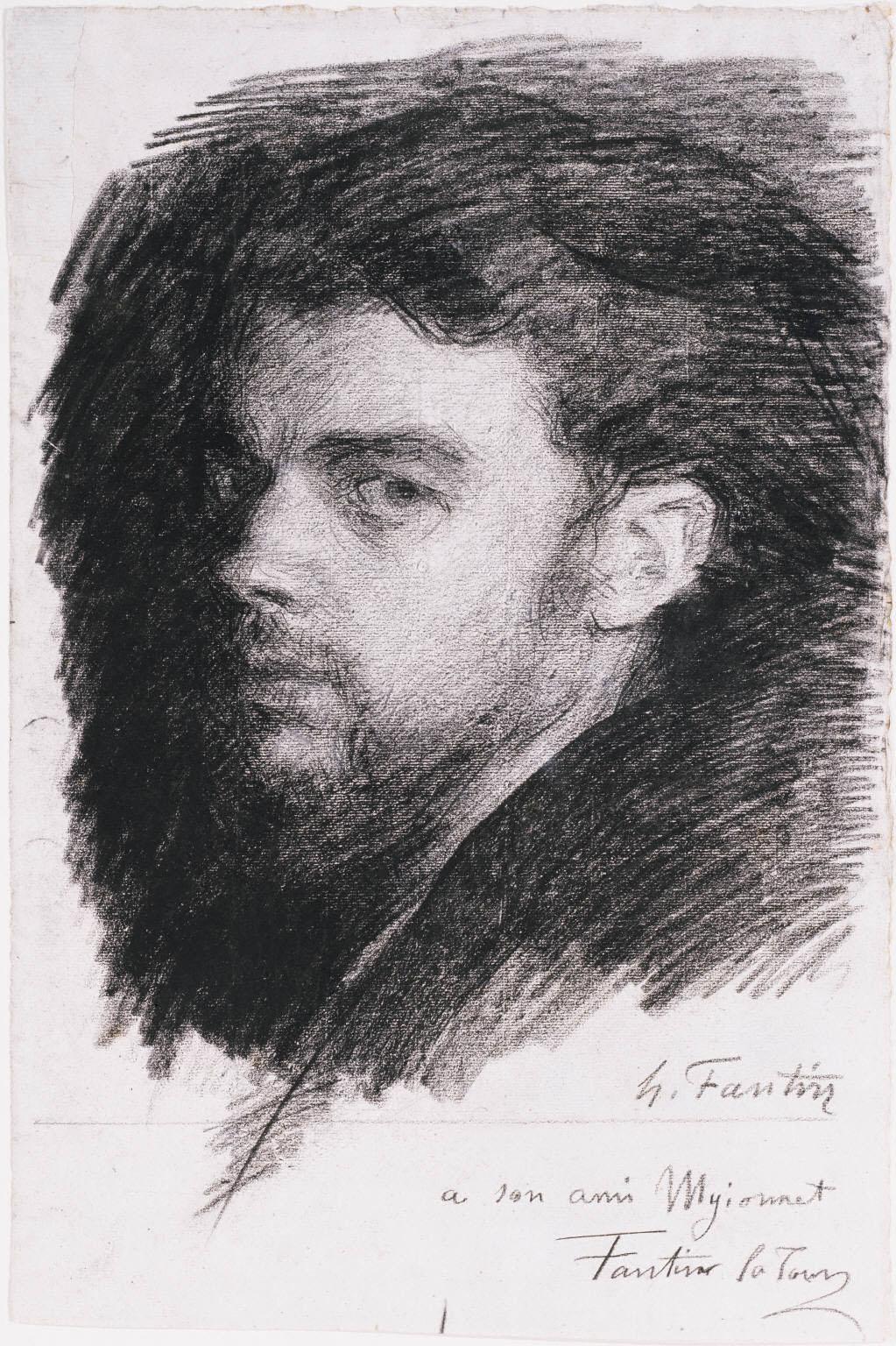Self-Portrait
Henri Fantin-Latour ( 1861 )

The majority of Henri Fantin-Latour’s self-portraits date from the first phase of his career. When he was later asked about this, he replied in an oft-quoted statement that the artist is “a model who is always ready and who offers all sorts of advantages; he is exact, submissive and one knows him before painting him.” It is not unusual for an artist at the beginning of his career to use himself as a model or, as Fantin did, to look to family and close friends for equally available and amenable subjects. While it is not known whether Fantin ever followed the methods of his teacher Lecoq de Boisbaudran, this practice recalls as well Lecoq’s system of drawing and painting based on a combination of close observation and memory.
The present portrait exhibits a degree of self-dramatization that evokes Rembrandt, an artist Fantin greatly admired. Half the face is engulfed in shadow, allowing him to experiment with chiaroscuro effects in order to convey a sense of mystery by withholding details of physiognomy. Thickly applied strokes define the area surrounding the face, while a finer network of lines is reserved for the face itself, to model the shapes of the cheekbone, nose and brow. The keenly observant eye of the artist, his most vital instrument, is near the center, further accentuated by the tremulous lines that encircle it and define the eye socket. Fantin’s concentration here on chiaroscuro values presages the next stage of his career: in 1862 he was to begin experimenting with the lithographic medium in his pursuit of an art based more on fantasy.
That Fantin clearly prized this drawing is suggested not only by its indisputably careful modeling, but also by its subsequent history. He gave and dedicated it to Florestan Myionnet (1835-1872), a member of the circle of friends around Fantin in the early 1860s. Little is known about Myionnet, who may have had literary ambitions; he is mentioned occasionally in Fantin’s early correspondence. When Fantin discovered the present work at a dealer’s after Myionnet’s death, he reclaimed it.